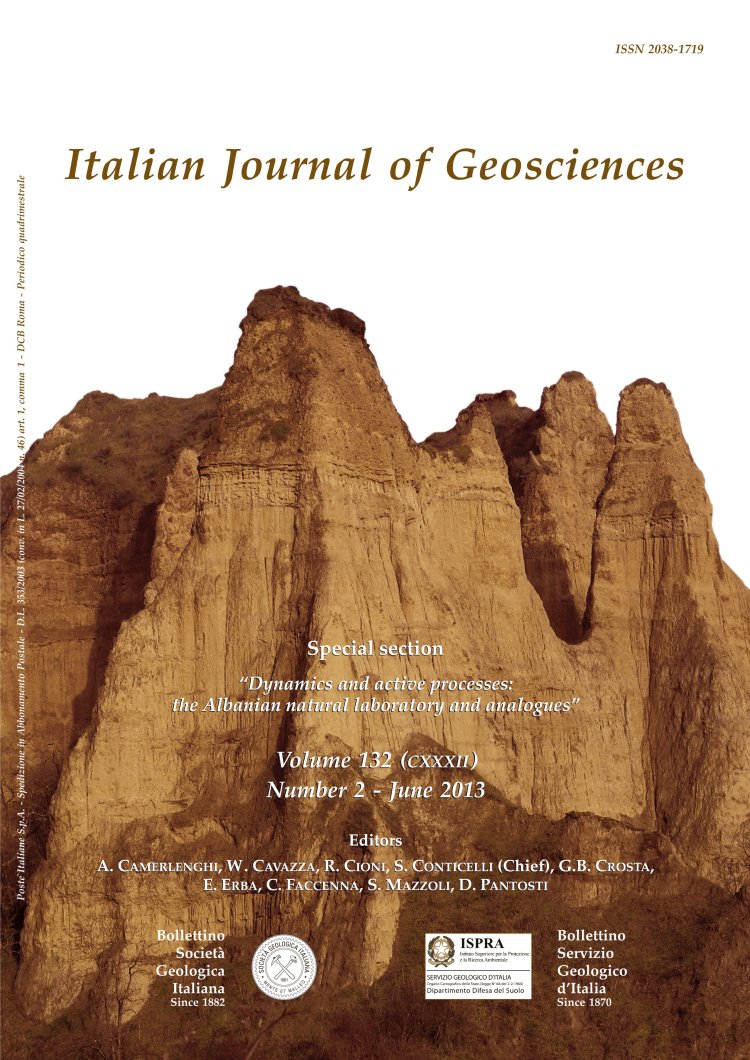
Integrated geological and petrographic study supporting the interpretation of ancient artefacts: the case history of Palagonia area (SE Sicily)
Rosalda Punturo(*), Giovanni Sturiale(*), (***), Carmela Vaccaro(**), Rosolino Cirrincione(*) & Andrea Mustica(*)
(*) Dipartimento di Scienze Biologiche, Geologiche e Ambientali,Sezione di Scienze della Terra, Università di Catania, Corso
Italia, 57 - 95129 Catania. E-mail: punturo@unict.it
(**) Dipartimento di Scienze della Terra, Università di Ferrara, via Saragat, 1 - 44100 Ferrara.
(***) Arcadia University, The College of Global Studies, via Roma, 124 - 96100 Siracusa.
Volume: 132 (2013) f.2
Pages: 263-273
Abstract
A little area located in the northern margin of the Hyblean Plateau (SE Sicily), close to the little town of Palagonia (administrative territory of Catania), in the archaeological area of Caltagirone, was studied by means of geological and petrographic integrated surveys.
The starting point for the study was the occasional discovery of an uninterpreted ancient artefact, whose manufacture was our subject of interest.
The geological-geomorphological study consists of detailed field mapping at 1:10.000 scale and of the reconstruction of the stratigraphy and of the hydrogeological setting of the site.
The area is characterized by a succession of interbedded volcanic and sedimentary litotypes ranging in time from the late Pliocene to Holocene affected by tectonic episodes causing the formation of a graben-horst setting.
In detail, the find is located close to a graben whose floor was occupied by a lake (now disappeared) in the Holocene time, representing a superficial aquifer system. Furthermore, the detailed reconstruction of the stratigraphic succession, represented by a thick horizon of vulcanoclastites (late Pliocene-early Pleistocene)
overlapped by a thin level of calcarenites (early Pleistocene) was coupled with petrographic investigations, that emphasized the degree of alteration of the volcanoclastic sequence, as testified by the widespread occurrence of secondary authigenic minerals such as clayey material that substitute volcanic glass and primary minerals and, at the same time, fills in the open vesicles; this process determines an increase in impermeability of the site's substratum compared to the overlying calcarenite. Thus, the geological and petrographic data suggest the presence during the recent past, of a shallow unconfined aquifer.
The collected data, that testify a probable high availability of water, are in agreement with the direct observation of the ancient artefact, mainly represented by a system of circular and squared chambers linked by narrow trenches, of which we also estimated potential the water amount that could be stored in.
Keywords
Northern margin of the Hyblean Plateau, palaeoenvironmental reconstruction, geo petrographic
survey, ancient artefact.
Get Full Text